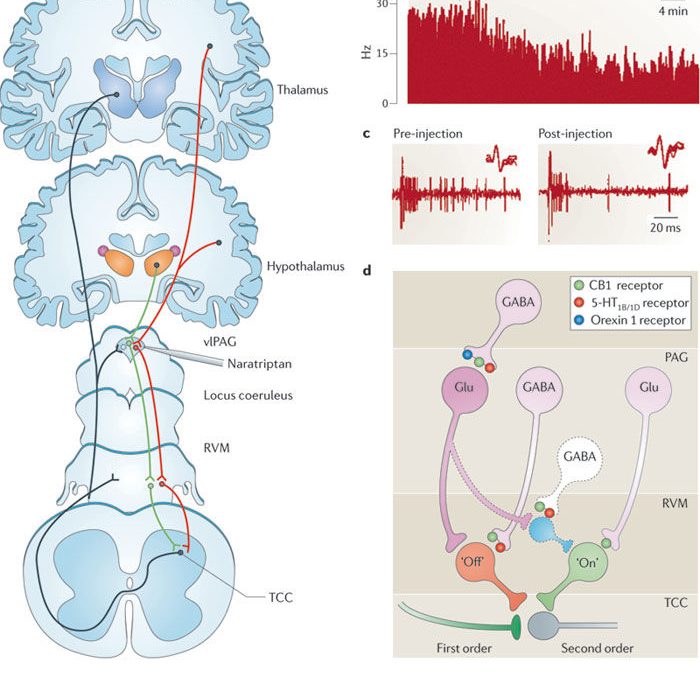Central Descending Modulation of Trigeminovascular Pain

Central Descending Modulation of Trigeminovascular Pain
Trigeminal nociception may be modulated internally, beginning in the cortex like most pain relay networks in the CNS (Noseda & Burstein, 2013). Cortical dysexcitability, fluctuations in cortical excitability, has been shown to greatly influence vulnerability to migraine attacks (Ayata et al., 2006; Coppola et al., 2007; Vecchia & Pietrobon, 2012; Lang et al., 2004; SK & F, 2007; Werhahn et al., 2000), but the mechanism is unknown. Some studies have indicated that certain areas in the cortex and the level of excitability in those areas may contribute to migraine pain development in the pathways from the cortex to the trigeminal system. For instance, direct descending projections have been anatomically distinguished from the cerebral cortex to the spinal trigeminal nucleus in rats (Desbois et al., 1999; Jacquin et al., 1990; Noseda et al., 2010b) and in human beings
(K. HG, 1958). In Noseda et al 2010, CSD starting in the primary somatosensory cortex caused inhibition of meningeal-induced responses, whereas CSD triggered in the insula caused facilitation of meningeal-induced responses (Noseda et al., 2010b). CSD generated in the primary visual cortex caused the primary somatosensory cortex to inhibit and the insula to augment meningeal-induced responses of the TCC.


